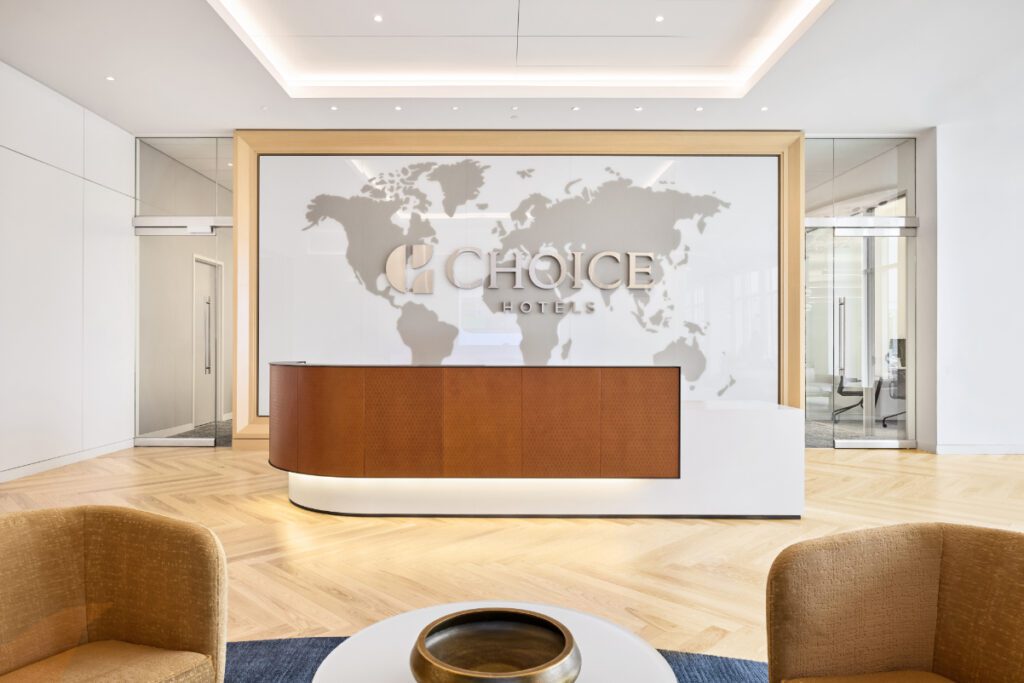
Skift Take
Choice Hotels is adapting its business strategy because it believes the future of travel involves longer stays, Boomers prefering premium brands, and more trips built around sports and music events.
Choice Hotels International is doubling down on higher-end and extended-stay hotels as it pursues growth beyond its traditional roadside motel roots.
On Monday, the company’s executives outlined to analysts an expansion strategy centered on urban markets and longer-term stays. They want to shift their hotel portfolio mix to more “revenue-intense” properties — and they used the phrase “revenue intense” five times.
“99% of rooms in our global pipeline are in our more revenue-intense brands, which means that the pipeline represents a meaningful revenue per available room premium compared to our existing portfolio,” said president and CEO Patrick Pacious.
Executives aimed to de-emphasize the Rockville, Maryland company’s reputation as being about roadside motels and mid-tier properties. They are seeking to capture more higher-spending travelers and to shift to more efficient operational models.
Pushing Upmarket
Choice is betting big on its upmarket shift. The company’s development pipeline suggests future properties will have:
- 30% higher revenue-per-available room potential than current properties.
- 40% more rooms per hotel than current properties.
- Higher royalty rates (essentially, fees that Choice collects) from franchisees — with an estimate of about 70 basis points above the current portfolio, on average.
The strategy appeared to be resonating with hotel developers. Choice Hotels’ global pipeline grew 11% from a year earlier, and 99% of rooms in development are in what executives called its “more revenue-intensive brands.”
“When investors look for a proven prototype, a proven operating model, and a proven exit, we’ve been able to demonstrate that in very significant and robust ways,” said Pacious.
The company said its WoodSpring brand accounts for approximately two-thirds of all economy extended-stay construction that U.S. developers are currently undertaking.
7 Key Trends Benefiting Choice Hotels
1. Extended-stay properties are a major focus. Choice plans to grow this segment by over 10% year-over-year for five consecutive quarters. The company just hit 500 extended-stay hotels.
2. Business travel is showing signs of recovery. It’s reaching levels close to pre-pandemic 2019. Choice Hotels has seen particularly strong bookings from the transportation and government sectors.
3. Infrastructure spending is driving demand. Executives said that’s good for Choice because 38% of its properties are in the top 10 states receiving federal infrastructure funds. A reshoring of American manufacturing could create demand for extended-stay properties, Pacious said.
4. Live tourism is a key demand driver. Sports and entertainment travel is emerging as a significant driver, with college football realignment and major concert tours creating new travel patterns.
5. The company is riding demographic tailwinds. An aging population with significant wealth (35% of U.S. wealth held by those 55+) will prioritize travel.
6. Continued strength in road trips. About 5,000 Choice hotels are within a mile of highway exits.
7. American interest in travel abroad remains above 2019 levels. Choice Hotels is also expanding internationally, particularly in Europe, where it recently signed its first direct franchising agreement in Spain and added 2,000 rooms in France.
Third Quarter by the Numbers
- Net income: $105.7 million, up 15% year-over-year.
- Adjusted EBITDA: $177.6 million, up 14% year-over-year (a quarterly record).
More Optimism for Full-Year Results
The company raised its full-year 2024 outlook, implying 10% growth in EBITDA at the midpoint. Its improved guidance to analysts comes despite a slight decline in domestic revenue per available room — suggesting its growth strategy and international expansion offset domestic headwinds.
One bright spot was ancillary revenue, including from co-branded credit cards. These fees more than doubled year-over-year in the third quarter. But some of this growth comes from one-time Radisson integration benefits.
- Net income: Now expects $276 million – $284 million (up from $260 million – $272 million).
- Adjusted EBITDA: Tightened to $590 million – $600 million (previous $580 million – $600 million).
Accommodations Sector Stock Index Performance Year-to-Date
What am I looking at? The performance of hotels and short-term rental sector stocks within the ST200. The index includes companies publicly traded across global markets, including international and regional hotel brands, hotel REITs, hotel management companies, alternative accommodations, and timeshares.
The Skift Travel 200 (ST200) combines the financial performance of nearly 200 travel companies worth more than a trillion dollars into a single number. See more hotels and short-term rental financial sector performance.
